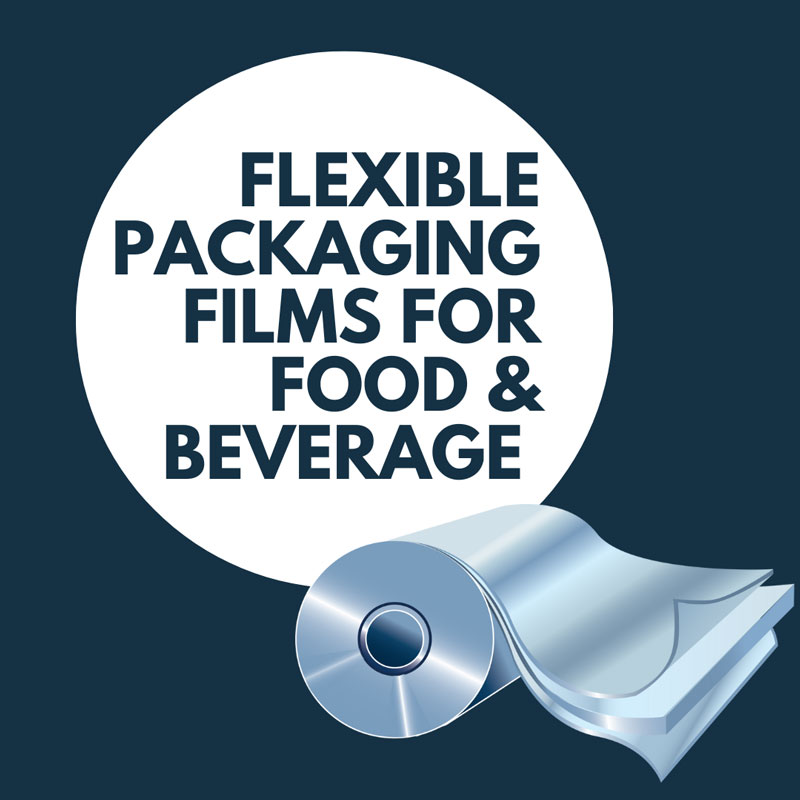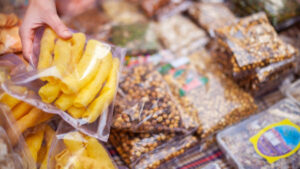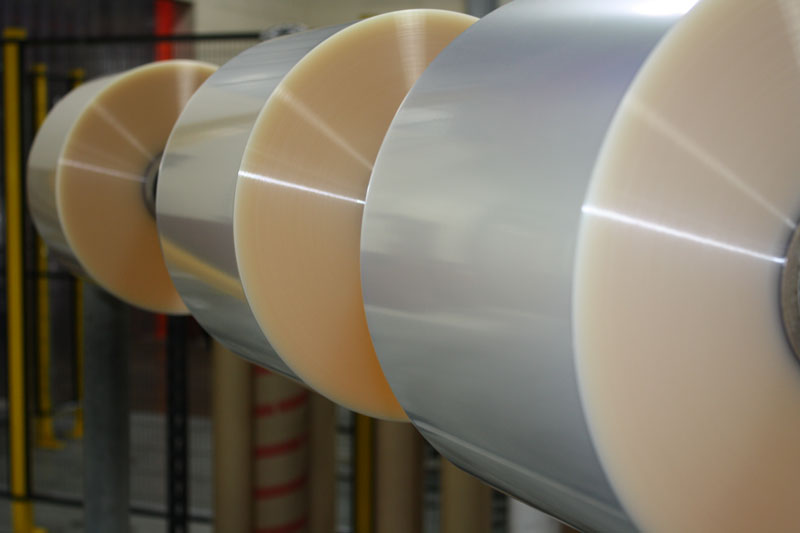
The consumption of food and beverage products in the U.S. has grown significantly over the years. Along with this growth has come an increased need for new food packaging solutions that can help extend shelf life while at the same time preserving the flavor and taste of these products. Plastic films are playing a huge role in the development of these new solutions.
So, what are the factors driving the growing demand for new and innovative flexible food packaging? Here are a few:
packaging? Here are a few:
- Increased spending by food and beverage manufacturers to bring new products to market
- Desire by manufacturers to improve production efficiency due to the rising costs of labor, food ingredients, and transportation
- Growing demand for case-ready packaging products that have improved shelf life
- Growing consumer demand for simple, ready-to-eat and ready-to-cook packaged foods
- Increased consumer sensitivity to food waste reduction
Why Foods Spoil
Think about it. Practically every food product a consumer purchases – whether from a local grocery store, a big box chain, or even online – is packaged in some way. And unless they work in the food and beverage industry, a consumer likely never thinks about how much the product packaging can affect the quality and safety of their purchase.
One of the biggest challenges with food and beverage manufacturing is spoilage. While there are lots of ways a manufacturer can try to limit food spoilage, there are many factors that can lead to it.
Light. When foods and beverages are exposed to light, whether it’s natural or artificial, bad things can happen. Food can become discolored, it can lose its vitamins and nutrients, and flavor can be affected.
Air. Oxidation is a chemical process that occurs when food is exposed to air. The effects can include changes in flavor, color, and vitamin/nutrient loss.
Temperature. When food is exposed to temperatures between 40°F-140°F, there is a greater chance for bacteria growth. In fact, certain foods can see double the amount of bacteria growth within just 20 minutes of increased temperature exposure.
Microorganisms. Bacteria is just one of the microorganisms that can cause food spoilage that can lead to food-borne illness. Other types include fungi like yeast and mold, viruses, and parasites.
Physical Damage. A food or beverage item that’s not packaged well can easily be damaged if it’s dropped or if the packaging rips. This can lead to food spoilage as well.
Food Packaging for Extended Shelf Life
If spoilage is a concern for your food or beverage brand, there are ways to address it that can be more natural and more cost-effective than adding chemicals such as preservatives to your products.
The use of flexible food packaging solutions such as plastic films can not only help prevent food spoilage but also extend shelf life, which is a top priority for just about every food manufacturer these days.
The types of food products that can benefit from the right kind of food packaging are pretty much endless and can include:
- Meats, poultry, and fish
- Dairy products
- Produce
- Snack foods
- Bakery products
- Deli items
- Frozen foods
- Semi-solid or liquid foods
- Dry foods
- Pasta
- Spices and powders
Extending the shelf life of products through innovative food packaging film is a win-win for both consumers and food manufacturers.
The consumer gets peace of mind knowing the items they purchase aren’t likely to spoil before they’re able to use them. They can also enjoy the convenience of food packaging that is easier to open, reseal, and even store.
Manufacturers benefit from less inventory waste since products can stay in the warehouse longer. They also benefit from expanded product distribution – since faster transportation methods that prevent spoilage may no longer be needed. Lastly, manufacturers can even expand their product offering thanks to flexible packing solutions that allow them launch products that weren’t possible before due to packaging constraints.
Types of Plastic Films in Food Packaging

The types of films used in packaging for the food and beverage industry can be broken into segments such as polyethylene, polyester, polypropylene, among others.
At PennPac, we supply a wide variety of packaging films that are designed for direct food contact and meet or exceed FDA regulatory requirements and third-party audit needs for food safety.
- Our high-performance BOPP films can be used in applications ranging from snack foods and frozen foods to pet food and treats.
- We also carry a large inventory of Polyester (PET) film, which has food-safe properties that won’t contaminate food with chemicals or other materials.
- Cast PP films can be a good option for food packaging because they are flexible and fatigue resistant which makes them tear or puncture-resistant.
- Perhaps most suited for extending shelf life of food products is our inventory of Metallized films. These types of films offer a strong barrier against oxygen, water, and light.
- Many of our Specialty films are commonly used for food and beverage applications and include Forming/Non-Forming films, Lidding film, Easy Peel film, and Sheeted film.
Looking for New Food Packaging Film Solutions? Contact PennPac.
You’re guaranteed to get the best possible plastic films in food packaging when you partner with PennPac. Our facilities are AIB certified and our Manheim, PA location has earned SQF (Safe Quality Food) Certification.
Call 717-664-4040 or email us today to connect with one of our experienced team members. Ready to request a quote?
